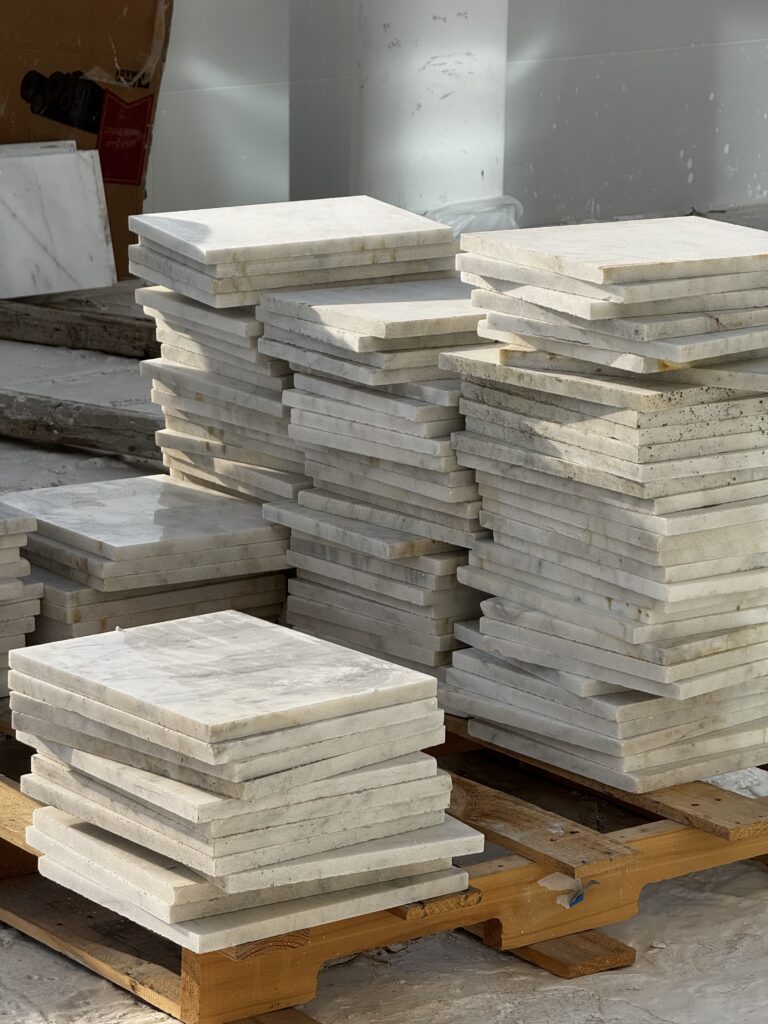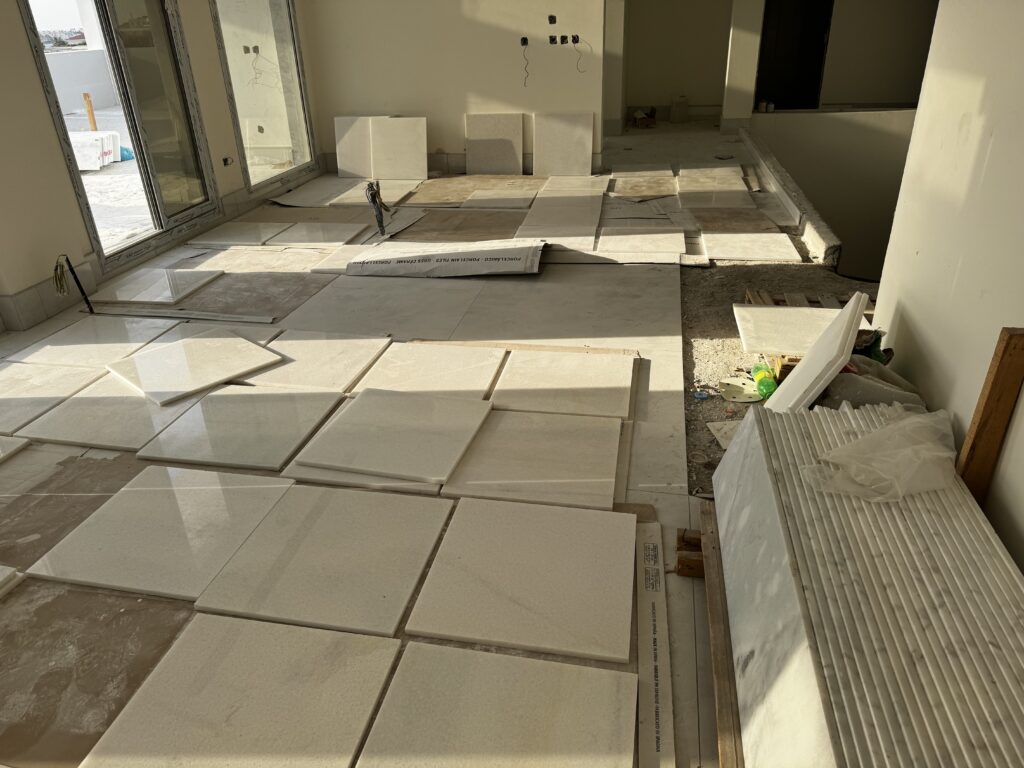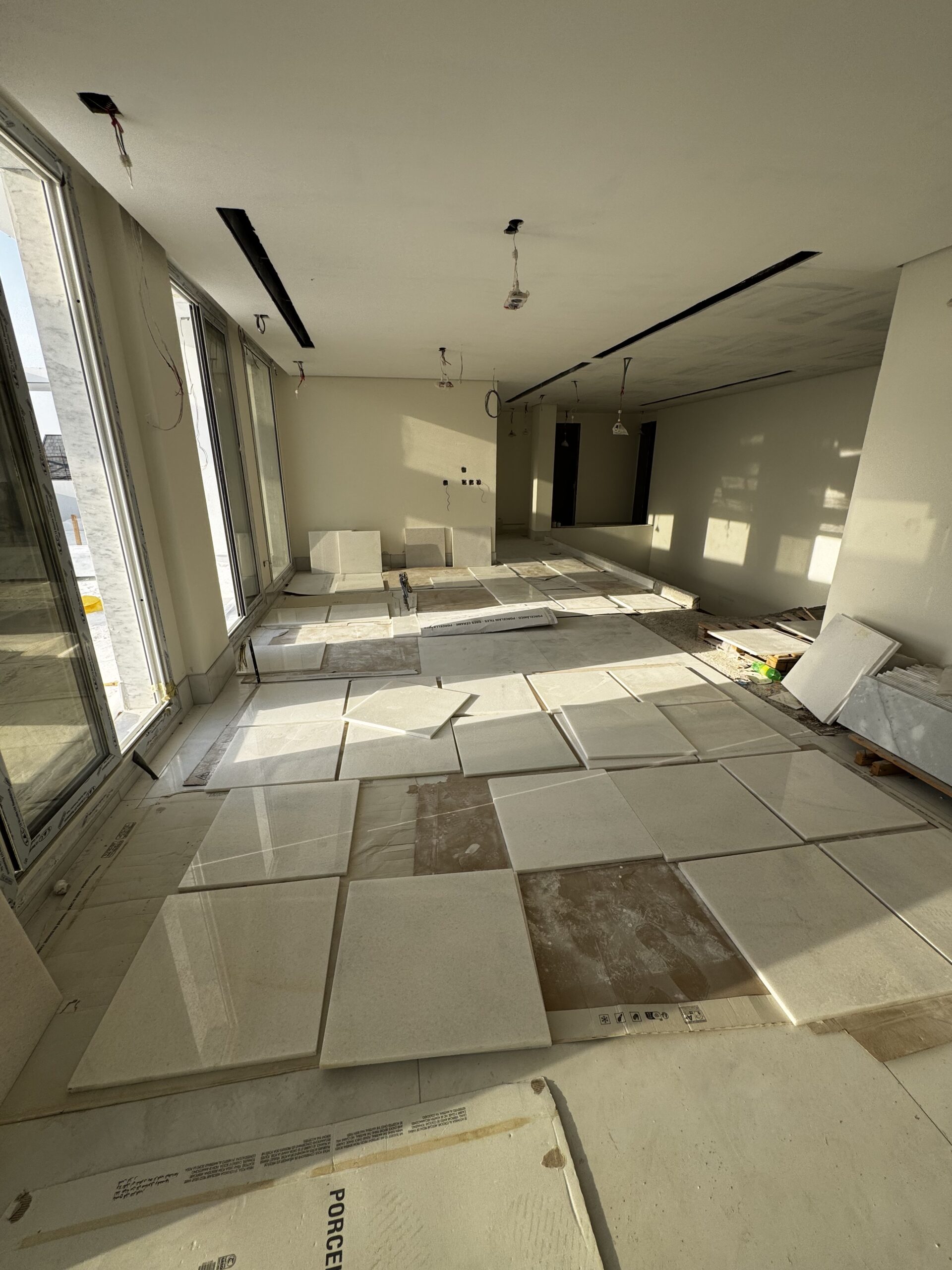In luxury architecture projects, marble becomes more than just a finishing material—it is a visual statement and a central element in shaping architectural identity. However, achieving this visual quality doesn’t begin when the marble is installed on a wall or floor, but at the moment the pallet is sorted. This is precisely what distinguishes professionally managed projects from those that surrender to the randomness of suppliers.
Marble as a Sensitive Material: Where Lies the Risk?
Marble is a natural material, which grants it a unique, unmanufactured character. At the same time, it is prone to significant tonal and visual variations, even within the same slab or between pallets from the same quarry. When marble is purchased from ready suppliers without direct supervision of block extraction from the quarry, the risk doubles. A single pallet may hide inconsistent pieces or even leftover fragments deliberately gathered to increase quantity—a common commercial practice known as “pallet stuffing.”
Marble Sorting: A Delicate Architectural Task That Allows No Improvisation
Sorting marble is not random—it is a critical task that demands direct supervision by the consultant and executing contractor, and includes the following clear stages:
1. Visual Inspection: The First Step Toward Harmony
- Color and Tone: Pieces are sorted by hue. Even white marble, like Crema Marfil or Bianco, contains subtle shifts between warm beige and cool grey.
- Veining Patterns: Each piece is assessed for vein patterns—angled, straight, fragmented—and whether it allows for Book Match or V Match installation.
- Visual Consistency: Mixing pieces with stains, natural cracks, or dense grains with clean, soft pieces is prohibited—even if sourced from the same quarry.
2. Numbering and Color Coding
After the visual sort, each tile is numbered and given a color or symbolic code (e.g., A1, B3, C2…) based on visual uniformity. These codes are used later to arrange the tiles during installation.
Note: In large-scale projects, digital sorting tools or 3D visualizations are sometimes used to create a complete visual floor plan before actual installation.
3. Mechanical Testing: Detecting Hidden Flaws
- Sounding Test: Light tapping is used; a hollow sound may indicate an internal void (crack pocket).
- Absorption Test: Select pieces are wetted to test water absorption, a key indicator of material density and quality.
- Precise Measurement: Tile dimensions and thickness are verified, as discrepancies over 2 mm may cause installation issues.
4. On-Site Storage Logistics
- Vertical storage is always preferred to avoid breakage.
- Foam or wooden spacers should be placed between tiles.
- Storage location must be near the work zone with adequate maneuvering space depending on site size.
In tight urban villa projects, storing small batches by room is ideal to avoid overcrowding.
5. Comparison: Ready-Supplied Marble vs. Quarry-Selected Marble
| Aspect | Ready-Supplied Marble | Quarry-Selected Marble (Custom) |
|---|---|---|
| Quality Control | Limited—relies on supplier integrity | High—blocks selected manually |
| Visual Consistency | Not guaranteed | Ensured via direct sorting |
| Cost | Relatively lower | Slightly higher but more sustainable |
| Risk of Stuffing/Fraud | High | Low |
| Delivery Time | Faster | Slightly longer due to cutting process |

6. Common Mistakes in Marble Sorting
- Skipping sounding tests, leading to sudden breakage after installation.
- Mixing shades in the same room, weakening the overall visual impact.
- Mismatched veining creating a chaotic floor appearance.
- Poor storage, exposing marble to moisture or physical damage.
7. Consultant’s Role: Where Responsibility Begins
- Pre-informing the supplier of acceptable and unacceptable marble tones.
- Approving a physical mockup before shipment approval.
- Direct supervision of sorting either on-site or at the main warehouse.
- Documenting the sorting process through notes, images, and coded records.
8. Contractor’s Role
- Assigning a specialized team for sorting—separate from installation crew.
- Maintaining organized tracking of codes and measurements.
- Collaborating with the consultant on installation planning based on sorting.
- Training workers to follow codes and not improvise tile placement.
Conclusion: Sorting Is Not a Luxury—It’s the Foundation of Success
What appears on the final floor or wall is the result of hundreds of visual and practical decisions. Every marble tile represents more than a material—it’s a precise design choice. Proper sorting transforms this choice from chaos into coherence.
In a high-end project, the goal is not to say “It’s all white marble anyway,” but to ask: Is it coordinated? Balanced? Creamy or bright? Subtle or richly veined? The difference between a visitor asking “What kind of marble is this?” and exclaiming “This is stunning!” lies, simply, in how the marble was sorted from the pallet.


Pingback: Post-Occupancy Architecture: When Users Rewrite the Space
Pingback: Architectural Burnout: The Mental Toll of Overdesigned Spaces
Comments are closed.